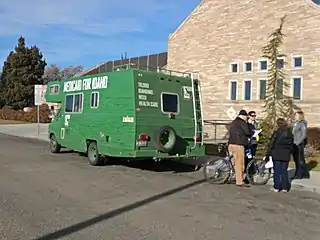Medicaid coverage gap
In the United States, the Medicaid coverage gap refers to the group of uninsured people (in states that have opted out of the Medicaid expansion under the Affordable Care Act (ACA)) who are both ineligible for Medicaid under its previous rules, which still apply in these states, and too poor to qualify for the ACA's subsidies and credits that were designed to allow middle-class Americans to purchase health insurance. The number of Americans in this gap has been estimated to be almost 3 million as of January 2016, according to the Kaiser Family Foundation. The Foundation has also said that 90% of the people in this gap live in the South.[2] In states that have not expanded Medicaid, eligibility requirements for Medicaid are limited to parents making 44% or less of the poverty line, and in almost all such states, all adults without children are ineligible. The coverage gap results from this and a number of factors, such as the fact that the ACA was designed so that the poor would receive coverage through Medicaid and so did not include an alternative program for them.[3] For example, as of April 2014, someone living in Texas, a nonexpansion state, had to be making less than $3,737 per year to be eligible for Medicaid, and had to make at least $11,490 (if a single person) or $23,550 (for a family of four) to be eligible for ACA subsidies.[4] On November 1, 2015, an episode of Last Week Tonight with John Oliver dedicated its main segment to discussing the Medicaid coverage gap.[5]


States such as Idaho, Utah, Maine, Oklahoma, and Missouri have addressed, or are addressing, the Medicaid gap through ballot measures, a form of direct democracy.
References
- "Status of State Action on the Medicaid Expansion Decision, as of July 7, 2016". Kaiser Family Foundation. August 3, 2016.
- Gunn, Dwyer (26 January 2016). "The Medicaid Coverage Gap Persists". Pacific Standard. Retrieved 7 March 2016.
- Garfield, Rachel (21 January 2016). "The Coverage Gap: Uninsured Poor Adults in States that Do Not Expand Medicaid – An Update". Kaiser Family Foundation. Retrieved 7 March 2016.
- Malter, Jordan (21 April 2014). "Millions slip into Obamacare 'coverage gap'". CNN. Retrieved 7 March 2016.
- Bradley, Laura (2 November 2015). "John Oliver Explains How Medicaid Is Like Gym Shorts". Slate. Retrieved 7 March 2016.